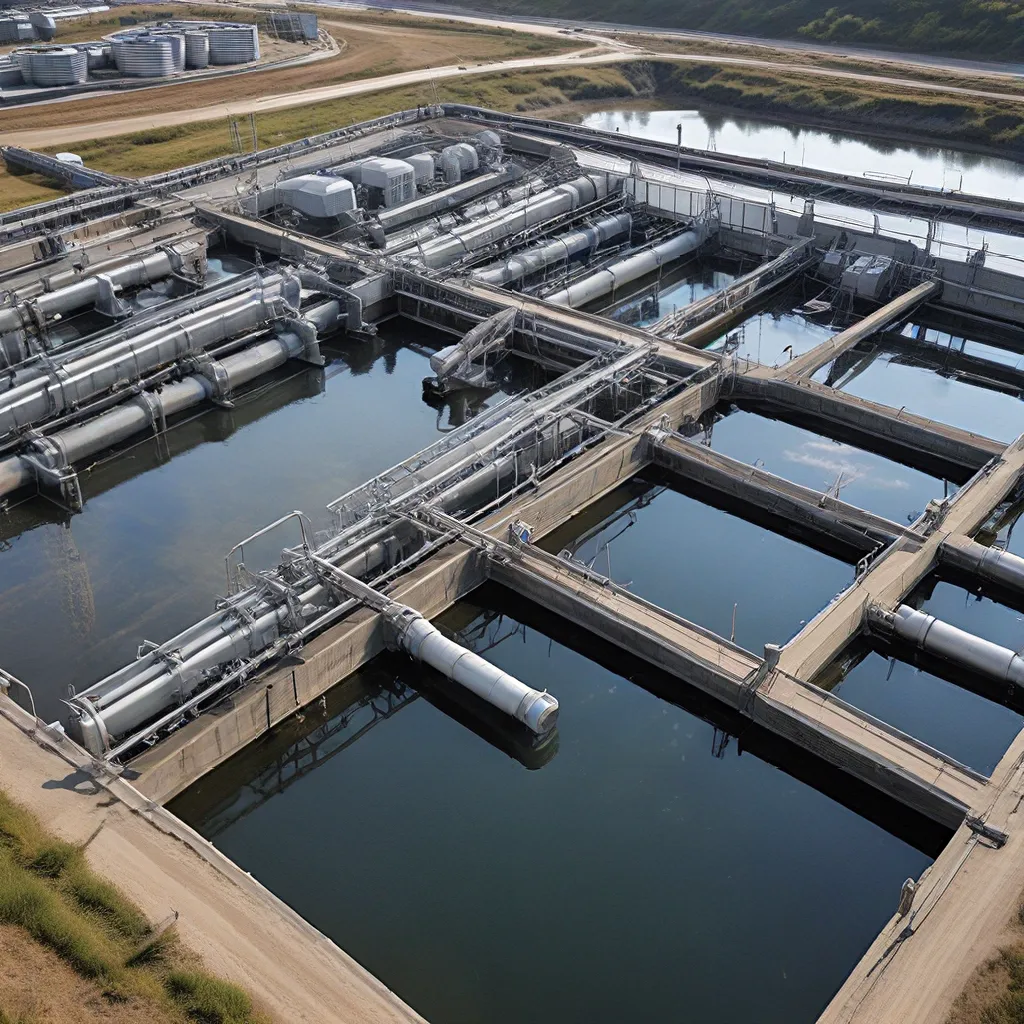
As an environmental enthusiast, I’ve always been fascinated by the intricate relationship between our modern world and the natural ecosystems that sustain us. It’s a delicate balance, one that requires constant vigilance and innovative thinking to maintain. That’s why I’m excited to dive into the intersection of wastewater treatment and the emerging hydrogen economy – a convergence that promises to unlock a future brimming with possibilities.
Embracing the Hydrogen Revolution
The shift towards cleaner energy sources is undeniably one of the defining challenges of our time. Hydrogen, with its potential to reduce carbon emissions and offer a versatile fuel alternative, has captured the attention of industry leaders and policymakers alike. As the world races to meet sustainability goals, the rise of the hydrogen economy has become a topic of growing fascination.
But what if I told you that the key to unlocking the full potential of hydrogen might just lie in our wastewater treatment plants? It’s a notion that may seem counterintuitive at first, but the more I’ve explored this concept, the more I’ve become convinced of its transformative power.
Wastewater: The Untapped Treasure Trove
Picture this: our wastewater treatment facilities, often seen as necessary but mundane infrastructure, could actually be the wellspring of a new energy revolution. These unsung heroes of the modern world already play a crucial role in managing the flow of used water and contaminants, but their true value extends far beyond that.
Recent studies have revealed that wastewater treatment plants harbor a treasure trove of untapped resources – namely, the potential to produce renewable hydrogen on a significant scale. By harnessing the organic matter and byproducts generated during the treatment process, these facilities can become veritable hydrogen factories, contributing to the growing demand for clean energy.
Unlocking the Power of Wastewater
The genius of this approach lies in its symbiotic nature. Wastewater treatment plants already possess the infrastructure and expertise necessary to handle large volumes of liquid waste. By integrating hydrogen production into their operations, these facilities can not only improve their own environmental footprint but also contribute to the broader hydrogen economy.
Imagine a future where your local wastewater treatment plant doesn’t just clean the water, but also generates clean-burning hydrogen to power your community’s homes, businesses, and even transportation. It’s a vision that’s rapidly becoming a reality, thanks to the innovative work of researchers and industry leaders.
Xylem, a global water technology company, has been at the forefront of this movement, exploring ways to integrate hydrogen production into the wastewater treatment process. By leveraging their expertise in water management and advanced metering infrastructure, they are paving the way for a future where wastewater becomes a valuable resource rather than just a byproduct.
The Hydrogen-Wastewater Symbiosis
The synergy between wastewater treatment and hydrogen production is truly remarkable. Wastewater treatment plants can use their existing anaerobic digesters to generate biogas, a rich source of methane and hydrogen. This biogas can then be refined and purified to extract the hydrogen component, which can be used as a clean-burning fuel or feedstock for various industrial applications.
But the benefits don’t stop there. The remaining digestate, a nutrient-rich byproduct of the process, can be repurposed as a fertilizer for agricultural use, closing the loop and contributing to a more sustainable, circular economy.
Environmental engineers have been at the forefront of this innovation, leveraging their expertise in areas like soil science, biology, and chemistry to develop efficient and cost-effective systems that minimize environmental impact. Their work is crucial in shaping a more sustainable future, and the integration of wastewater treatment and hydrogen production is a prime example of their ingenuity.
Navigating the Challenges Ahead
Of course, as with any transformative technology, the path to widespread adoption is not without its challenges. Regulatory frameworks, infrastructure investments, and public acceptance will all play a crucial role in determining the pace and scale of the hydrogen-wastewater revolution.
But I’m confident that with the right policies, collaboration, and a shared vision for a cleaner, more sustainable future, these challenges can be overcome. Utilities, policymakers, and the public will all have a part to play in realizing the full potential of this groundbreaking approach.
A Future Brimming with Possibilities
As I delve deeper into this topic, I can’t help but feel a sense of excitement and optimism. Wastewater treatment and the hydrogen economy are not just separate entities – they are interconnected pieces of a larger puzzle, each one holding the potential to unlock new avenues for environmental stewardship and economic growth.
The road ahead may be winding, but the destination is clear: a future where our wastewater plants aren’t just necessary evils, but rather engines of innovation that power our communities with clean, renewable energy. It’s a future that’s within our grasp, and one that I’m eager to be a part of.
So, if you’re as fascinated by this convergence as I am, I encourage you to explore further, to stay informed, and to join the conversation. The possibilities that lie ahead are truly boundless. Who knows what other untapped treasures our wastewater systems might hold, just waiting to be unleashed?